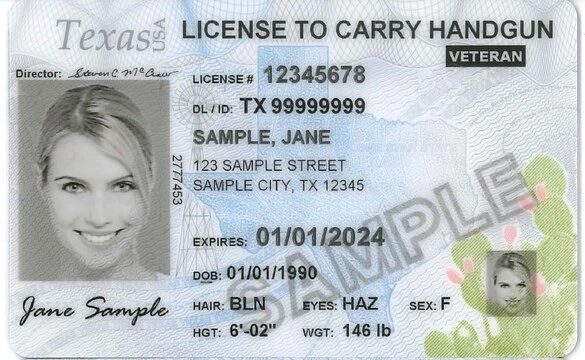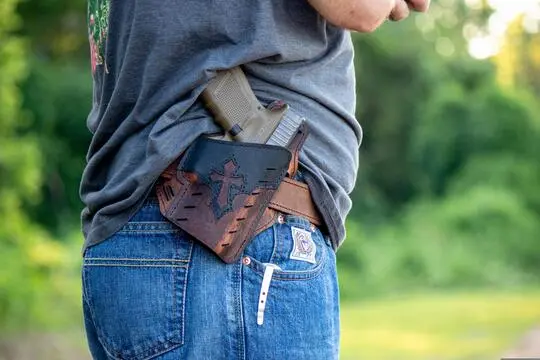The ability to quickly and safely deploy a handgun is a critical skill for anyone involved in self-defense or competitive shooting. Mastery of the draw can be the determining factor in a life-threatening scenario, making efficient gun deployment techniques essential. This article aims to explore the key methods and important tips for achieving a quick draw while maintaining the utmost safety.
Understanding the intricacies of drawing a firearm is crucial. With the right combination of proper handgun grip, body mechanics, and mental visualization, individuals can enhance their drawstroke, ensuring they can respond effectively under pressure. The following sections will guide you through the fundamental aspects of quick and safe handgun deployment, from selecting an optimal holster to the final extension towards the target.
Understanding the Basics of Handgun Draw
The basics of firearm draw serve as the foundation upon which speed and precision are built. Drawing involves the practiced motion of removing the handgun from its holster and preparing it to fire, while holstering is the safe return of the weapon to its secure position. The ready position refers to the firearm being gripped properly and held in a position from which it can be drawn quickly.
The drawstroke is the complete action from the onset of deciding to draw, through gripping, drawing, and aligning the firearm with the target, to the final firing position. Having a solid grasp of these basic elements is essential in developing a fluid and natural draw, ultimately reducing draw time and improving safety. A well-executed draw relies heavily on consistency and the seamless integration of each step into a single swift motion.
Understanding the physical and legal aspects of drawing, such as the legality of public firearm draw and avoiding common handgun draw errors, is just as important as the mechanics. It's not only about the speed of weapon presentation from the holster but also about knowing when and how it's appropriate to do so, making situational awareness a key component of the draw.
The Importance of a Proper Holster
Selecting the right holster is a significant factor in achieving quick and effective handgun deployment. A good holster will maintain its shape when the firearm is drawn, allowing for easy reholstering. It should hold the firearm securely, yet not impede the drawstroke. The features of a quick draw holster often include adjustable retention, a smooth interior for a fast draw, and the ability to remain concealed if necessary.
Holster selection directly affects draw speed, safety, and the prevention of accidental discharge. From open carry to appendix carry draw nuances, the chosen holster should accommodate different carry positions while providing easy access and protection to the trigger area. A holster that offers a balance of retention, accessibility, and comfort can significantly improve draw technique practice and overall firearm handling efficiency.
Mastering the Grip
Achieving a correct grip from the start is the first step toward a safe and swift draw. As the hand moves to grip the weapon, it should do so in a way that allows the strongest possible grasp of the firearm. This master grip should be established while the gun is still securely holstered, with fingers firmly wrapped, the web of the hand high on the backstrap, and the trigger finger indexed along the side of the holster to avoid premature contact with the trigger.
Muscle memory plays a pivotal role in quickly and consistently obtaining a solid grip. This requires persistent practice, focusing on the exact placement and pressure of the hand each time the weapon is drawn. Consistency in the development of the draw reflexes is what leads to an intuitive and immediate response when the firearm needs to be deployed.
Transitioning to a two-handed grip as the firearm is presented towards the target is the next stage following the master grip. Joining the hands should be smooth, with the support hand meeting the shooting hand to form a stable shooting platform as the gun is pushed out in extension. The handshake position that is achieved maximizes control and assists with accurate aiming at the ready position.
A solid grip is also about maintaining control throughout the draw. The tightness of the grip impacts the quick draw and accuracy, affecting the ability to handle the recoil and reset the firearm rapidly for subsequent shots if needed. Regularly engaging in firearm draw exercises that emphasize grip can help cultivate the dexterity required for an expert draw.
Steps of the Draw
The first step in drawing a handgun is clearing any cover garments, ensuring they do not interfere with accessing the firearm. This can be practiced with various types of clothing, enhancing the quick draw from concealment. The motion used to move the garment should be consistent, regardless of the attire, to instill a natural reflex.
Once the garment is cleared, hand placement becomes crucial. Hand positioning for a fast draw should be precise, with the fingers forming a master grip on the handgun handle while it's still holstered. This action sets the stage for a secure and efficient draw.
The actual drawing of the handgun from the holster follows, which involves a deliberate motion that must be both fluid and safe. The draw should be straight upward, keeping the muzzle oriented in a safe direction. Quick draw holster features that allow this swift yet controlled movement are invaluable.
The next stage is orienting the handgun towards the target, which is where body mechanics plays a significant role. The firearm should be brought to eye level in a straight line, which can reduce draw time and improve aim. Optimal draw angle and motion are key here, as they ensure the weapon is ready for use without unnecessary delay or excessive movement.
Finally, joining the hands and extending to shoot completes the draw process. As the gun moves forward, the support hand comes to meet the grip of the shooting hand to create a strong, two-handed hold. This transition to the shooting stance for a quick draw should be practiced until it becomes an automatic response, supporting both quick firearm deployment and accuracy.
The Role of Body Mechanics
The efficiency of the draw is greatly influenced by how well body mechanics are utilized. Proper stance not only contributes to the quickness of the draw but also to the stability and balance throughout the process. A stance where the feet are shoulder-width apart, knees slightly bent, and the weight forward on the balls of the feet establishes a stable platform from which to draw.
Understanding how to move and position the body during the draw is as vital as the handling of the firearm itself. Practicing with different body motions and from various positions can lead to improvements in drawstroke under diverse conditions. It is important to maintain safe muzzle direction throughout, with the body supporting the motion rather than working against it.
Safety Considerations and Common Mistakes
Safety is paramount when dealing with firearms, and this is especially true during the draw. The golden rule of keeping the trigger finger indexed along the side of the holster until ready to shoot is essential in preventing negligent discharges. Always be aware of muzzle direction, ensuring that the handgun does not sweep over any part of the body or bystanders.
Many common mistakes can detract from the quick and safe execution of a draw, such as fumbling with the grip, snagging on the holster, or lifting the elbow excessively. These errors can be rectified by slow, deliberate practice that focuses on smooth weapon presentation and efficient motion. Developing a methodical approach to shooting stance and firearm deployment reduces the chance for mistakes and builds confidence.
Another frequent mistake is forgetting about the mental aspect of drawing. Anticipation and mental preparedness play a huge role in the speed at which one can respond in a stressful situation. Incorporating visualization and firearm draw fidelity training can significantly improve both reaction times and decision-making processes.
Lastly, it is important to familiarize oneself with laws concerning the legality of drawing a firearm in public, which vary by location. Carriers must be well-versed in their local jurisdiction's regulations regarding brandishing and the justified display of a firearm. The ethical considerations of using a drawn firearm cannot be overstated, as the ramifications of such actions are profound.
Drills and Exercises for Improving Draw Speed and Safety
To enhance both draw speed and safety, specific drills should be incorporated into regular practice. Dry fire practice, using an unloaded weapon or dummy rounds, allows for the refinement of the drawstroke without the risk of an accidental discharge. Basic drills involving the steps of the draw can be repeated to build muscle memory and confidence.
Live fire draw drills at the range provide valuable feedback on one's technique and timing. These should be carried out under the supervision of a professional instructor, who can help identify and correct any errors in real-time. Emphasizing consistent hand positioning and smooth transitions can lead to measurable improvements in draw speed.
Variety in drills, such as drawing from different carry positions or incorporating movement, keeps the training challenging and effective. Practicing under simulated stress conditions or varying levels of complexity can better prepare individuals for a real-life quick draw scenario. Consistent training helps to overcome challenges and ensures that the skills remain sharp.
The Mental Aspect: Visualization and Stress Training
Mental training is often overlooked but is just as valuable as the physical practice of drawing a firearm. Visualization techniques involve rehearsing the drawstroke mentally, which helps in preparing the mind to execute the movements instinctively. Regular mental rehearsal can improve firearm drawing scenarios and foster a quicker response.
Simulated stress training, such as force-on-force exercises or timed drills, can replicate the psychological pressures of a real encounter. Such training models gun deployment under pressure, reinforcing habits that could save a life. The stress inoculation provided by these exercises promotes calmness and clarity during an actual event, ensuring the practiced techniques translate into effective action.
Legal Considerations and Responsible Carry
Every firearm carrier has a legal and ethical responsibility to understand the implications of drawing a firearm, especially in public spaces. Laws surrounding brandishing are designed to discourage reckless or intimidating displays of weapons. It is imperative to comprehend the legal aspects of defensive shooting and the potentially severe consequences of misjudging a situation.
This responsibility extends to maintaining proficiency with the firearm. Being able to draw under duress while adhering to legal constraints is the hallmark of a seasoned and responsible carry. It’s essential to remain updated on the laws and continuously evaluate one's abilities, ensuring a balance between readiness for self-defense and adherence to legal and social norms.
The Draw
Mastering quick and safe handgun deployment is an ongoing process that requires dedication and thoughtful practice. By paying close attention to the proper grip establishment, holster selection, and the fundamental steps of the draw underpinned by strong body mechanics, one can enhance both the speed and safety of their drawstroke. In addition to the physical aspects, mental preparedness and an understanding of legal considerations are pivotal in becoming a responsible and effective firearm carrier.
The journey to perfecting the draw technique is a personal one, with each individual finding their own rhythm and style within the parameters of safety and legality. Continuous learning, drills, and self-awareness are key to keeping these skills refined. Remember, the objective is not only to be quick but also to be right; a responsibly armed society is one that emphasizes both speed and judgment in the deployment of firearms.




